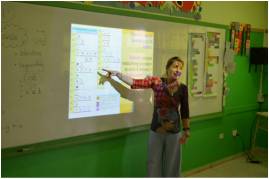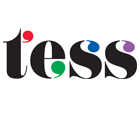Students at the school at which I work learn to decode systematically and explicitly. We believe that, given the balance of evidence, a good grounding in phonics, taught systematically, will provide them with the best opportunity to improve their reading comprehension. A key part of our teaching strategy is using assessment evidence to pinpoint what a student can decode and what they still need to work on.
As an Australian school we don’t have access to an Australian national or state-wide assessment for decoding skills or early reading comprehension. In the absence of such an assessment we have decided to use the UK Phonics Screening Check to help inform our instruction. We use the Phonics Screening Check because:
It provides a standard
One of the most common questions students, staff and parents have is whether a child is “doing ok” – are they at the standard for their age? The Phonics Screening Check gives us a standard that we can measure between year levels and across years. We know that students are at standard for their age when they can pass the Phonics Screening Check. It gives a definitive anchor for our work and helps guide what we do. Instead of having an individual feel for what an appropriate level of decoding might be, we have an agreed standard. This aids conversation: we all know exactly what it means to say a student is above or below that standard and we know what instruction and learning is required to get them there. We are able to detect much earlier when a student is in danger of not making the required level and can intervene earlier and with more of a sense of what is required.
Another feature of the earlier Screening Checks that is useful is the published item difficulties for each of the words and non-words in the 2012 and 2013 pilots. This gives a good indication of what words or non-words were more difficult than others for the UK students. We can then compare that to how difficult our students found those items and investigate when differences arise. What items are we comparatively strong at? Are there aspects of our instruction around the use of that grapheme that we need to record and make sure we are all include in our practice?
There may be other words/non-words our students unexpectedly find difficult to decode. Why can’t our students decode the word? What part of the word is proving to be the stumbling block? What do we currently do to teach the decoding of that grapheme and why is not working? What parts of our instruction need to be revised in order for students to improve?
It builds a bridge between classrooms
In our school the Prep (5 year old) classes are fluid – the groups are altered every six weeks and teachers change between classes. This results in a shared responsibility for the progress of all students in Prep. Fantastic conversations are had between teachers as they realise that kids who have been in one class are much better at something than students who have been in another class. It might be as simple as noticing children from class A always construct sentences with a capital letter at the start and a full stop at the end, something that doesn’t happen in class B. What is happening in this class that allows students to do this consistently and how can I teach my kids to do the same?
Sometimes, though, the differences in student learning between classes are not so obvious and it takes a specific assessment to reveal them. On the UK Phonics Screening Check there are times when students who are notionally in an earlier phase of their phonics work that have greater success in decoding a non-word than a class that should have done better. Why did that happen? What instruction around that grapheme phoneme correspondence in that class was so effective and how is best implemented in the other classes? How can we learn from each other in order to improve the instruction for all students?
The sharing of demonstrably effective practice results in teaching that is more successful. It doesn’t necessarily mean that all classes are exactly the same but it does allow the gap in effectiveness of instruction to be decreased. This is an equity issue: a student’s progress should not be based on a lottery depending on whether or not they get an effective teacher when classes are allocated. When the instructional quality of the team is growing, both as a whole and as individuals, all students benefit.
The Phonics Screening Check is an important component of the process of instructional improvement and allows a sense of what an appropriate level of decoding looks like. As such, I would heartily recommend it to all schools teaching phonics.
IFERI would like to thank Reid Smith, who is a teacher in Australia, for allowing us to re-blog this post. You can subscribe to his blog here:
https://notquitetabularasa.wordpress.com/
And you’ll find him on Twitter here: @Smithre5
IFERI supports and promotes the use of the Phonics Screening Check internationally. It is a free, easy to use, light-touch assessment. For more information, or to download the check, click here.



